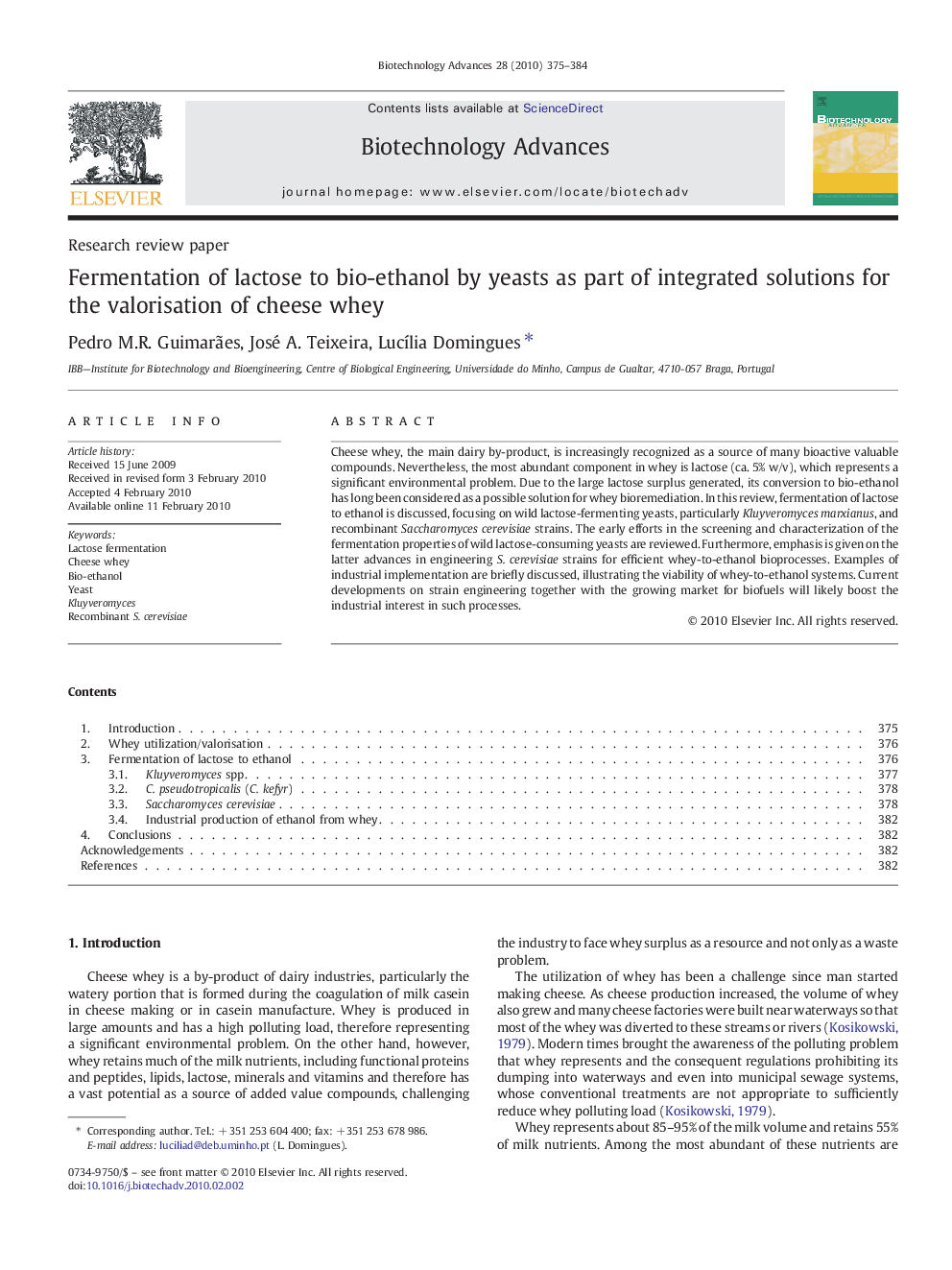| Article ID | Journal | Published Year | Pages | File Type |
|---|---|---|---|---|
| 14708 | Biotechnology Advances | 2010 | 10 Pages |
Cheese whey, the main dairy by-product, is increasingly recognized as a source of many bioactive valuable compounds. Nevertheless, the most abundant component in whey is lactose (ca. 5% w/v), which represents a significant environmental problem. Due to the large lactose surplus generated, its conversion to bio-ethanol has long been considered as a possible solution for whey bioremediation. In this review, fermentation of lactose to ethanol is discussed, focusing on wild lactose-fermenting yeasts, particularly Kluyveromyces marxianus, and recombinant Saccharomyces cerevisiae strains. The early efforts in the screening and characterization of the fermentation properties of wild lactose-consuming yeasts are reviewed. Furthermore, emphasis is given on the latter advances in engineering S. cerevisiae strains for efficient whey-to-ethanol bioprocesses. Examples of industrial implementation are briefly discussed, illustrating the viability of whey-to-ethanol systems. Current developments on strain engineering together with the growing market for biofuels will likely boost the industrial interest in such processes.
